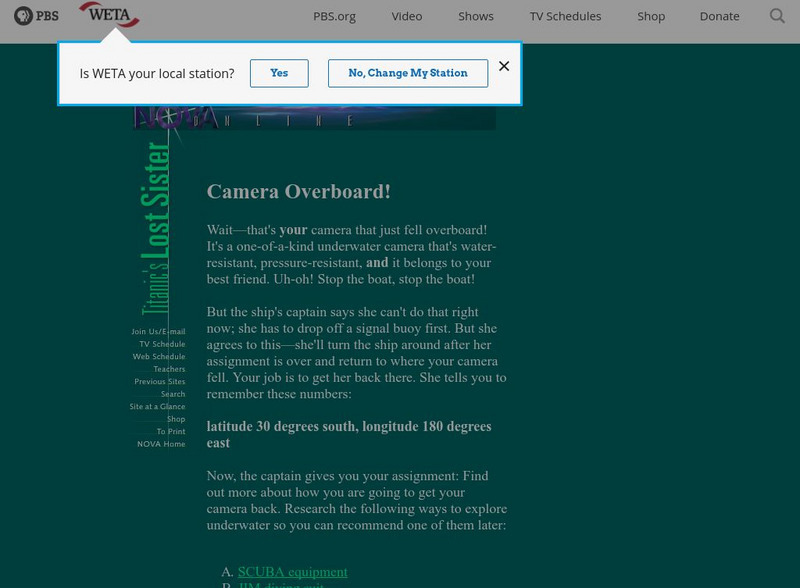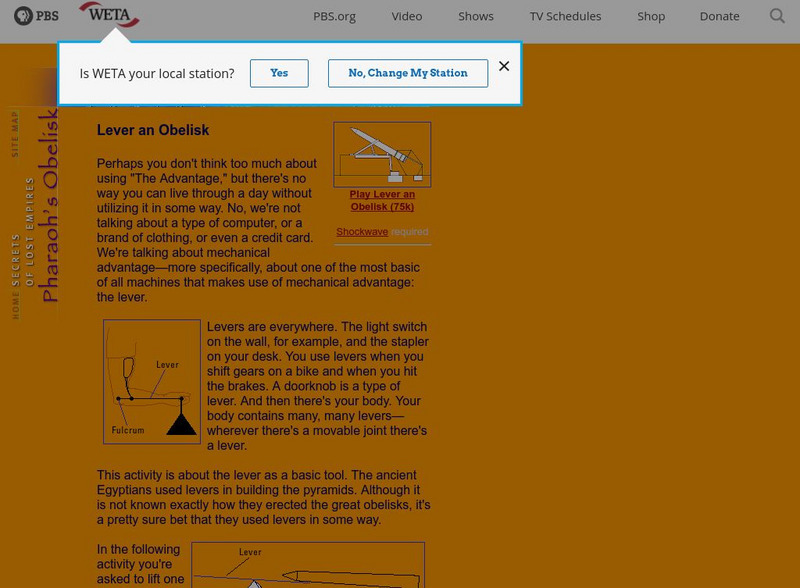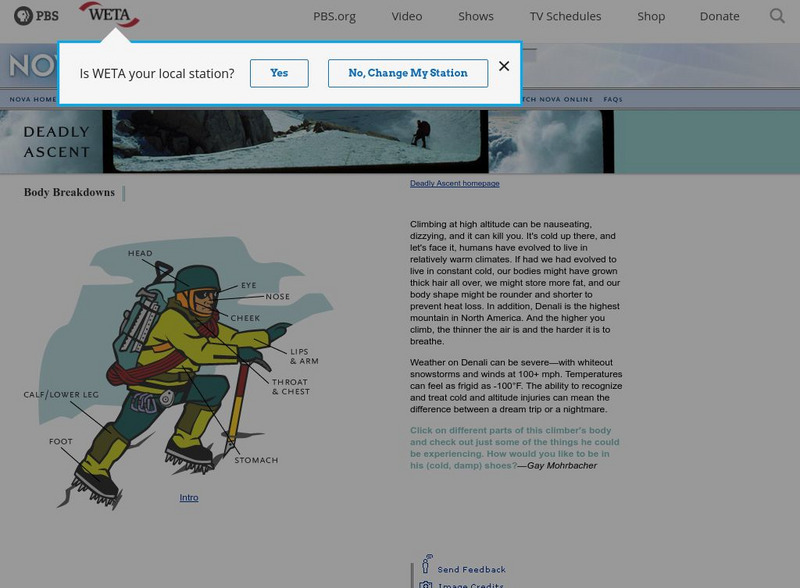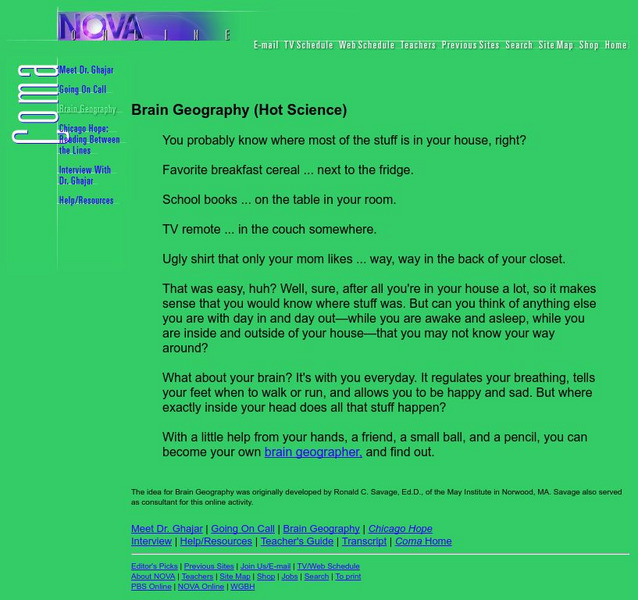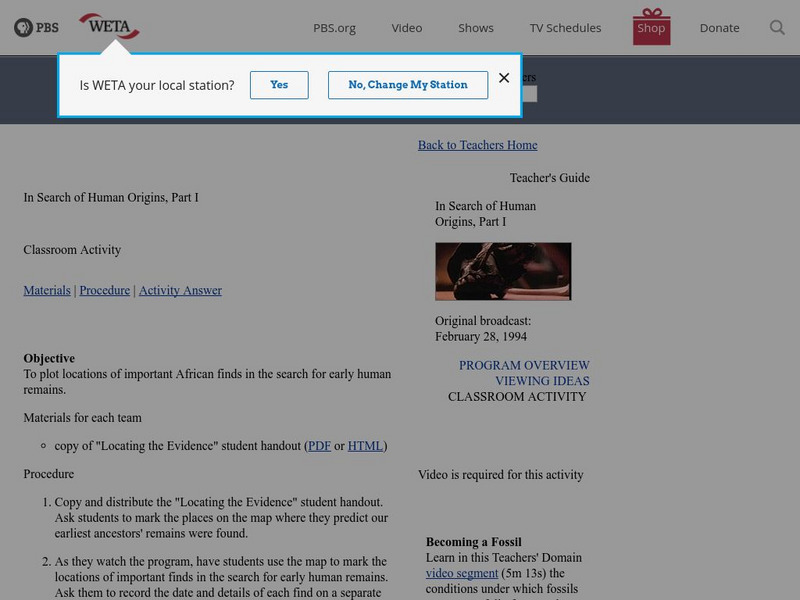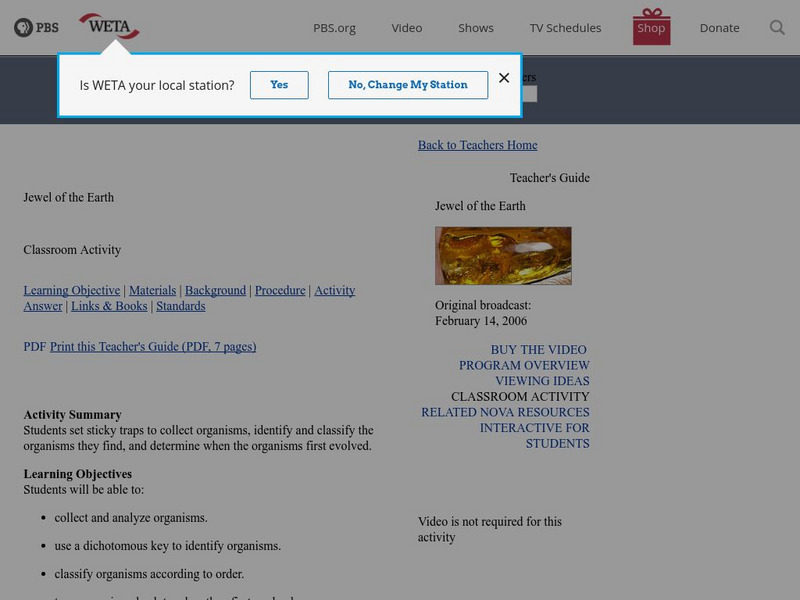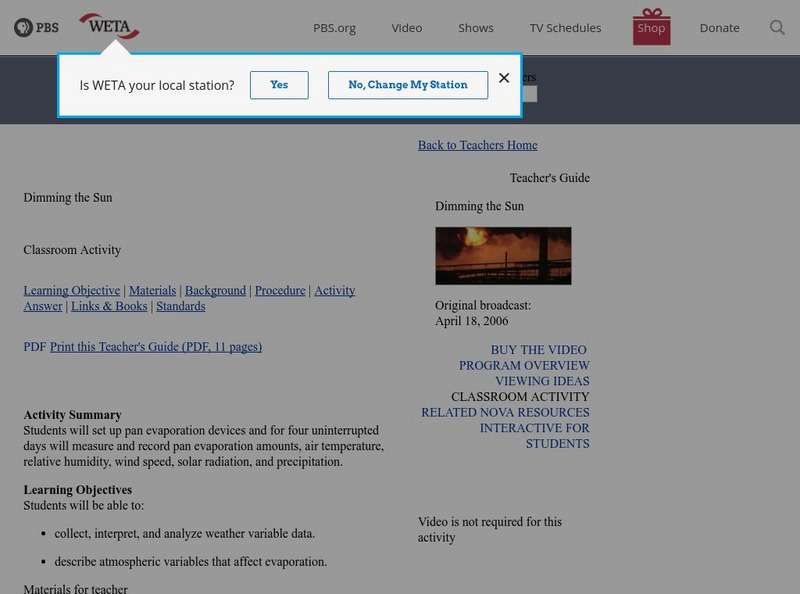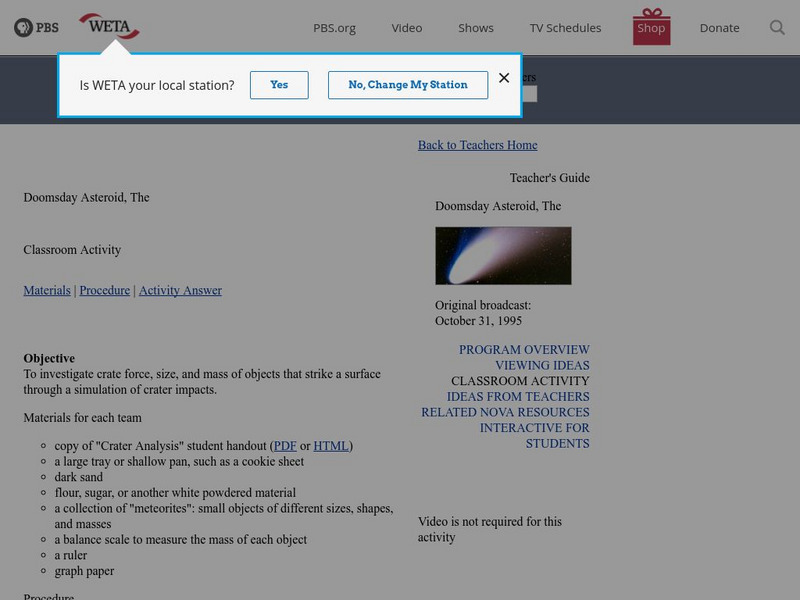PBS
Pbs Teachers:leopards of the Night: Seeing Through Camouflage
Sort twelve amazing creatures by the camouflage strategy they use in this interactive game. Discover whether animals are camouflaged by mimicry, disguise or coloration.
PBS
Pbs Teachers: Stationed in the Stars
Examine the factors that impact an astronaut's freefall in space. Differentiate between zero gravity, weightlessness and freefall.
PBS
Pbs Teachers: Titanic's Lost Sister: Camera Overboard!
Learn about different diving equipment in order to determine which would be most useful in recovering a sunken object and exploring underwater. Find a location on a globe or map using latitude and longitude coordinates.
PBS
Pbs Teachers:world in the Balance: Who Will Take the Heat?
Examine the environmental, economic and political issues surrounding global climate change policy. Conduct a role-play, and explore the options available to tackle global climate issues.
PBS
Pbs Teachers: Secrets of Lost Empires Ii: Lever an Obelisk
Utilize an understanding of how a lever works to lift an obelisk, using as few of the weights and support stones as possible in this online interactive activity.
PBS
Pbs Teachers: Deadly Ascent: Body Breakdowns
Explore the injuries mountain climbers can sustain when they reach high altitudes, and discover how extreme cold can damage the human body.
PBS
Pbs Teachers: Shackleton's Antarctic Odyssey: Meal of Endurance
Analyze caloric intake vs. caloric expenditure, understand the nutritional value of the explorer's meals, describe the trend in diet changes the explorers experienced and explain the physiological consequences these changes caused.
PBS
Pbs: Brain Geography
Become a brain geographer and learn the parts of your brain. This web site creates an interactive way to explore the center of our thoughts. Just click on each part to learn more.
PBS
Pbs: Resonance in Strings
Use this interactive site to compare how resonance affects both an every day string and the tiny string of the superstring theory. PBS helps demonstrate how resonant patterns are present in both music and everyday life.
PBS
Pbs Teachers: In Search of Human Origins, Part I: Classroom Activity
This lesson plan allows students to identify and plot the locations of important African finds in the search for early human remains.
PBS
Nova Teachers: Einstein Revealed: What's Your Wavelength: Classroom Activity
Investigate the wavelength properties of visible light and the scattering effects of the earth's atmosphere on different wavelengths.
PBS
Pbs Teachers:magnetic Storm: Visualizing Magnetic Fields
Explore the magnetic fields around different shapes of magnets.
PBS
Pbs Teachers: Jewel of the Earth
Collect and analyze organisms and use a dichotomous key to identify and classify the organisms. Research the evolutionary history of organisms.
PBS
Pbs Teachers:night Creatures of the Kalahari: Life in a Bottle
Understand that an ecosystem such as the Kalahari has a system of checks and balances to ensure that no species overpopulates and threatens the survival of other species. Chart a food chain and explore the balance between predator and prey.
PBS
Pbs Teachers:dimming the Sun
Conduct an experiment and investigate how air temperature, relative humidity, wind speed, solar radiation and precipitation affect evaporation. Graph the data collected during the experiment.
PBS
Pbs Teachers: Voyage to the Mystery Moon
Observe the night sky and speculate the distance between the Earth and its moon and Saturn and its moon. Explore how scientists have used robots to learn about celestial bodies, and conduct research about one of Saturn's moons.
PBS
Pbs Teachers: Volcanoes of the Deep
Discuss how individual organisms and groups of organisms interact with each other, and research and classify symbiotic relationships between individual organisms of different species.
PBS
Pbs Teachers: Volcano Above the Clouds: Climbing Kilimanjaro
Learn about Mount Kilimanjaro and develop a travelogue to describe the distinct ecological regions of Mount Kilimanjaro.
PBS
Pbs Teachers: Welcome to Mars: Classroom Activity
Learn about the scientists and engineers involved with the Mars rover mission. Interview people about their careers and explore different career options.
PBS
Pbs Teachers: In Search of Human Origins, Part Ii
Investigate human evolution by comparing height data of North American boys from 1890 and 1960 and discuss the significance of the data in terms of possible reasons for the evolutionary trends identified in the comparisons.
PBS
Pbs Nova Teachers: Building on Ground Zero
Discover how knowledge gained from disasters has influenced changes in safety features and building codes. Describe how codes have been used to try to prevent future loss of property or lives.
PBS
Pbs Teachers: Wanted Butch and Sundance: Classroom Activity
Examine how forensic anthropologists use data to investigate skeletal remains and use a data chart to estimate how tall a person might have been from the length of his or her bones.
PBS
Pbs Teachers: The Doomsday Asteroid
Investigate crater force, size, and mass of objects that strike a surface through a simulation of crater impacts.
PBS
Pbs Teachers: Secrets of Lost Empires I Colosseum
Discover how to use pulleys to change the direction of force, compare different pulley designs and discuss the advantages and disadvantages of a pulley.




